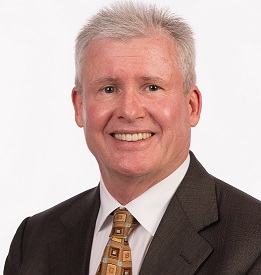
An earthquake in a major city, a bomb in a subway, a bus crash in rural town, COVID-19 pandemic hot zones — any event that overwhelms the capacity of available health care facilities is considered a mass casualty event. Lung damage and other internal injuries are particularly challenging to diagnose in multiple casualties during these events.
Handheld ultrasound devices, small enough to fit in a coat pocket, are already being used by first responders, emergency medical services medics and health professionals. The development of new artificial intelligence (AI)-based applications has the potential to improve obtaining, reading and interpreting images quickly and accurately, saving lives during a mass casualty event. Such advances could help guide rapid diagnosis, triage, and early treatment, whether they occur in urban or remote areas, especially in those with limited medical resources.
Oregon Health & Science University (OHSU) and Philips North America are collaborating to develop such applications as part of a Biomedical Advanced Research and Development Authority, or BARDA program. Philips will lead the development of the AI-based ultrasound program, including development of advanced software for its Lumify handheld ultrasound solution that could expand its user base to non-physician emergency medical service providers.
OHSU will conduct multi-center clinical studies to acquire ultrasound images of participants with smoke-inhalation lung injuries from fires, COVID-19 lung disease, and traumatic abdominal and extremity injuries. OHSU imaging and AI experts will interpret images and electronically explain the images for machine learning and algorithm development.
“In this project, a computer will be taught to read ultrasound images — and have the result in less than a minute — that should be as accurate as a physician expert,” said Kenton Gregory, MD, founding director of the OHSU Center for Regenerative Medicine, professor of biomedical engineering in the OHSU School of Medicine, and an affiliated faculty member of the McGowan Institute of Regenerative Medicine.
Five Years, Four Program Work Streams
The OHSU and Philips collaboration focuses on the development of machine learning algorithms for the Lumify handheld ultrasound solution to detect COVID-19 lung injury, smoke inhalation lung injury, trauma-based abdominal bleeding, and severe extremity injury.
Dr. Gregory is the principal investigator charged with managing all clinical and AI imaging work for the program. OHSU will subcontract with the Department of Defense and civilian sites around the country to acquire images, which will then come to OHSU for machine-learning processing.
“By using AI-enabled ultrasound in the field, we are helping to empower first responders with a technology that can give them better insight into traumatic injuries in the field at the first point of contact,” said Joseph Frassica, MD, head of research for Philips North America. “With this type of solution, they can make better, faster assessments of patients, improve the accuracy of field triage and potentially improve outcomes.”
The system has broad application not only for mass casualty events, but also for routine health care delivery in the U.S., especially as a cornerstone diagnostic tool for rural primary care medicine, and globally in locations where chest X-ray and computerized tomography (CT) devices and expert physicians for image interpretation are not readily available.
Read more…
